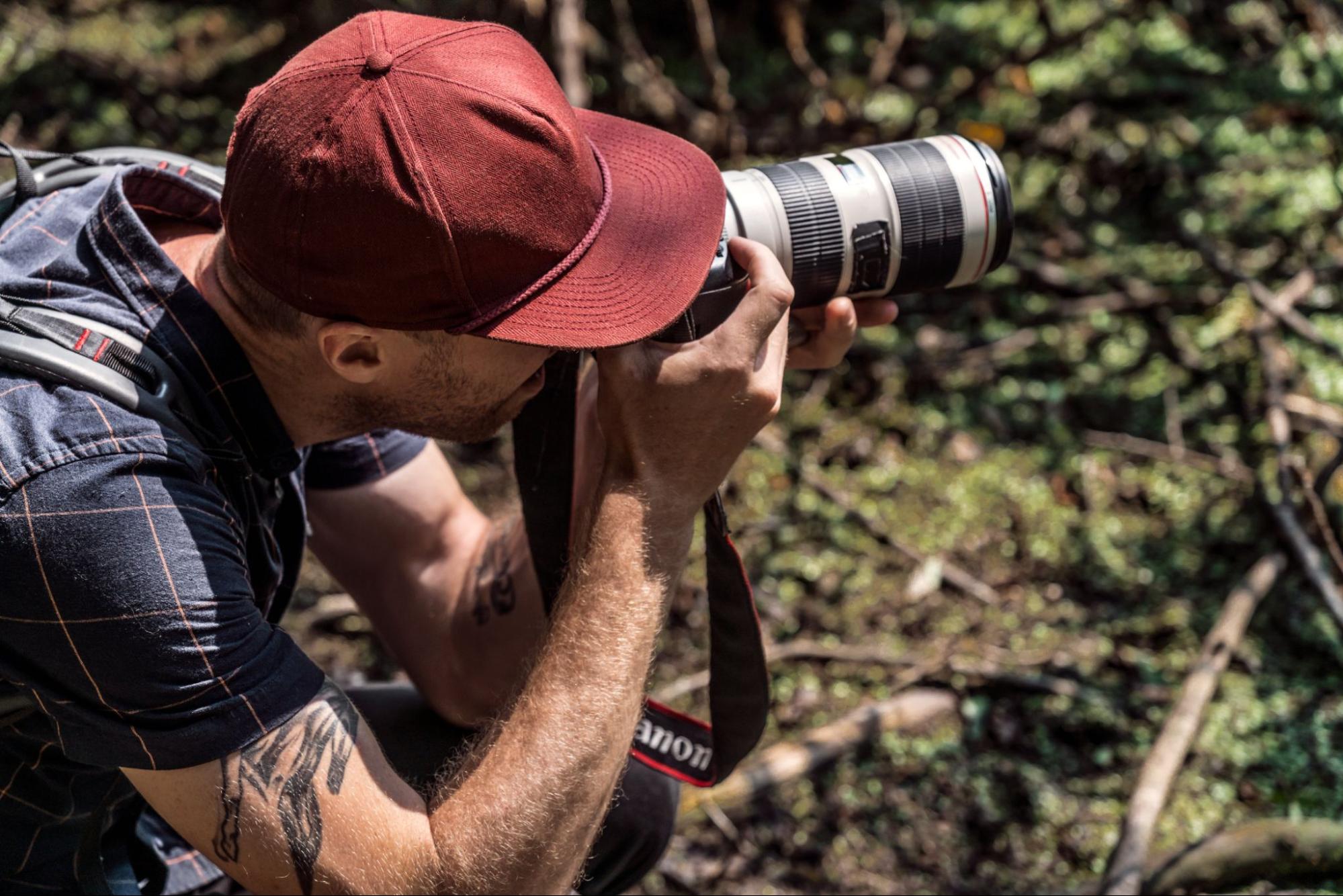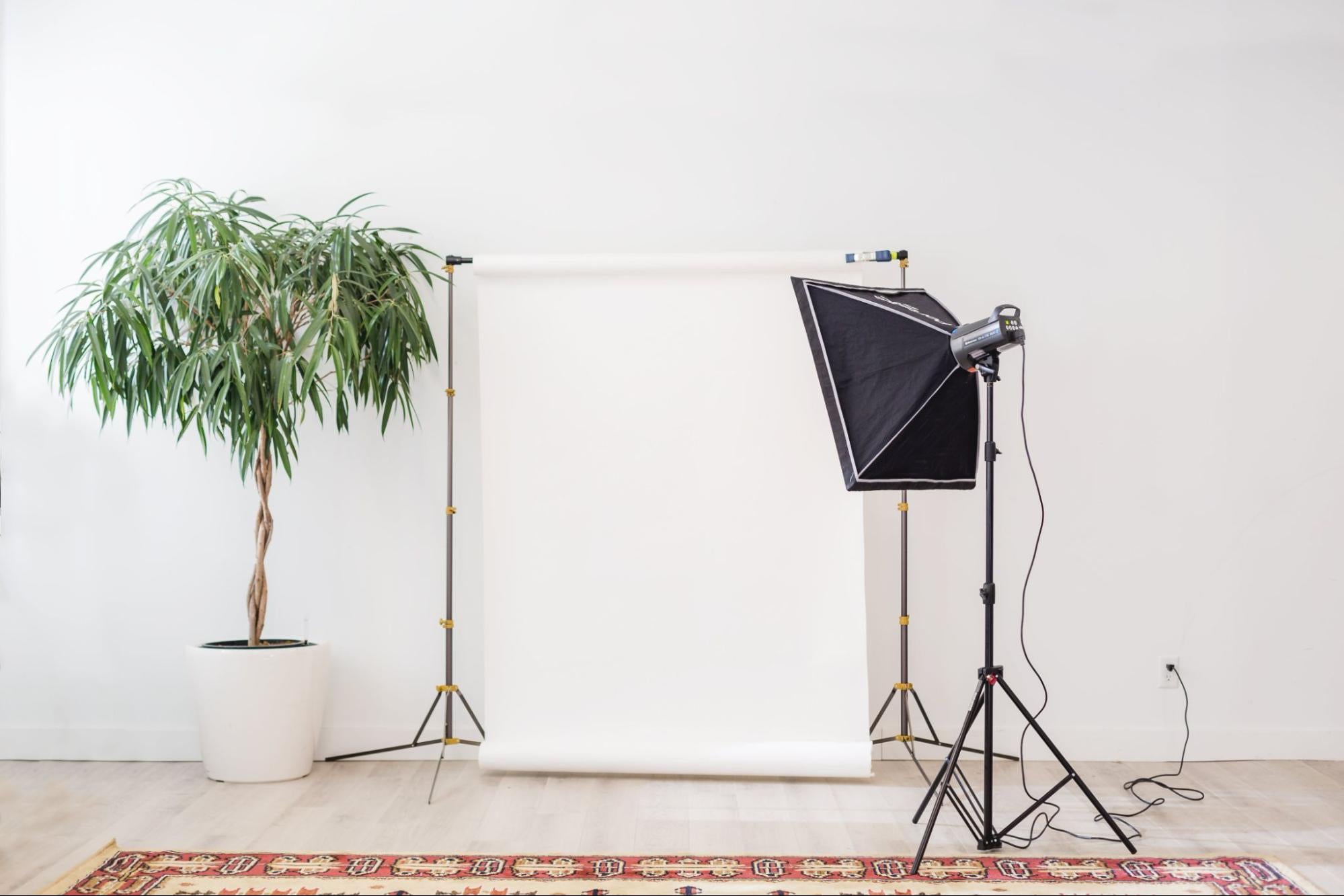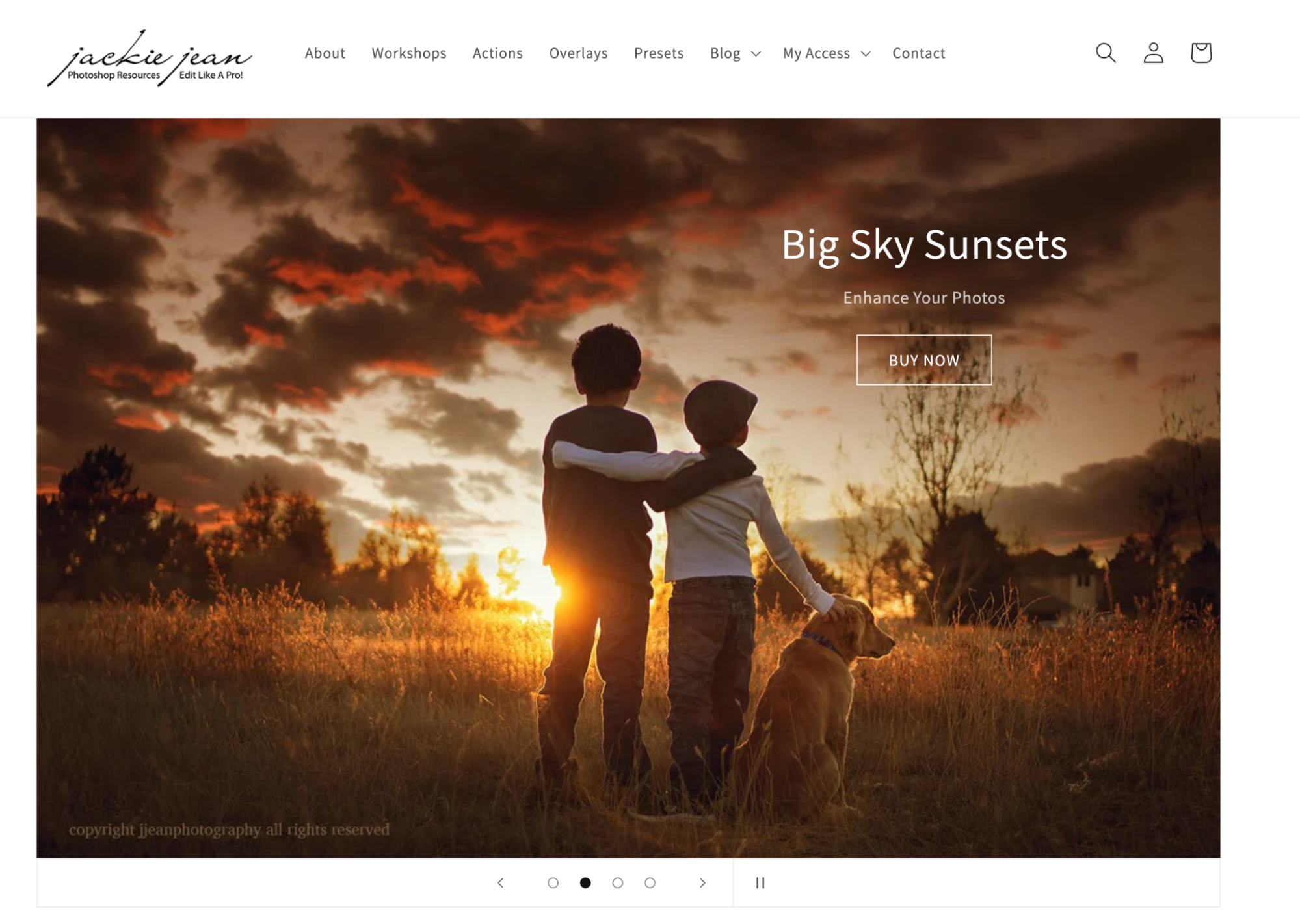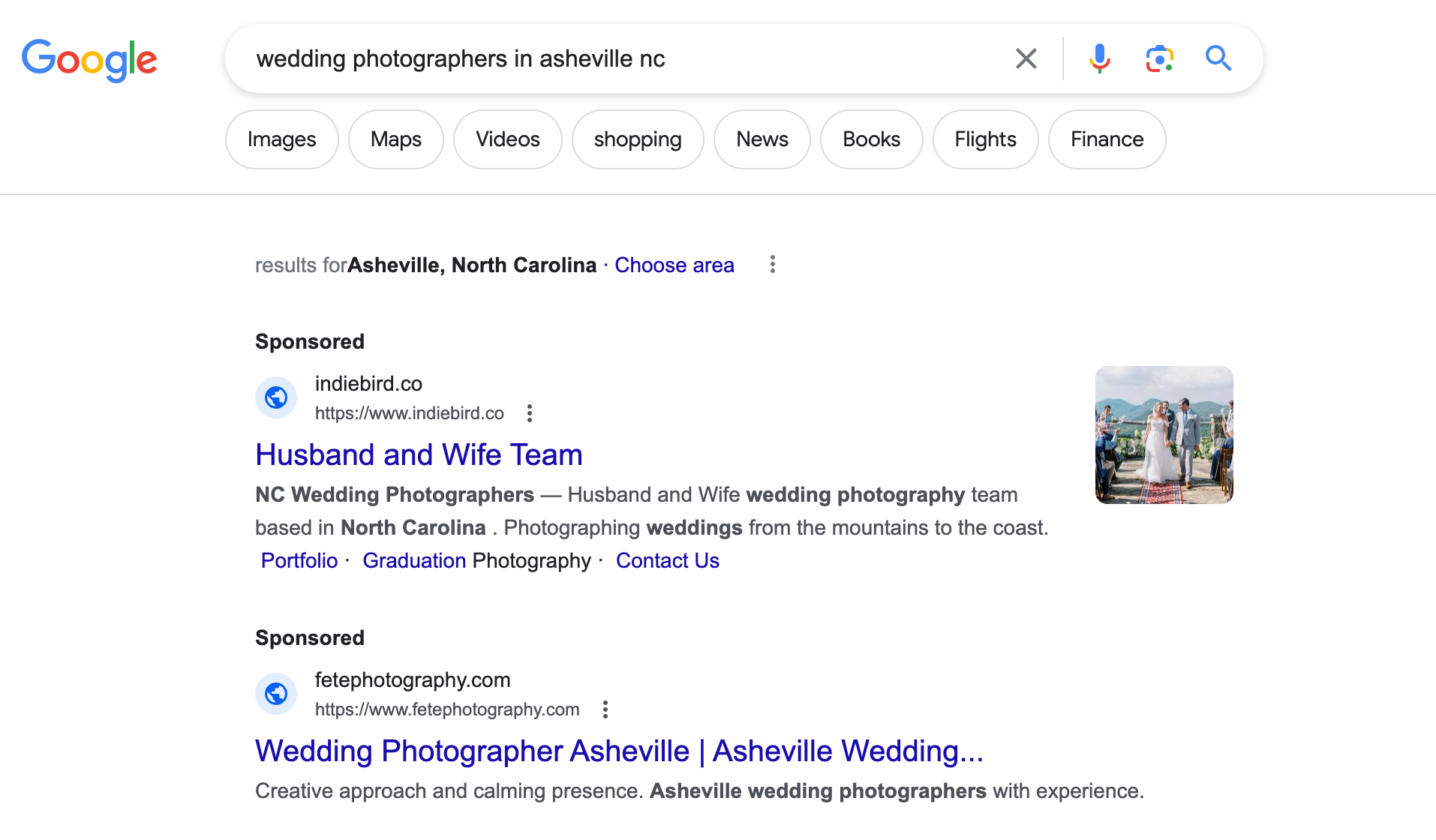Photography doesn’t have to be a mere hobby. Professional photographers are needed in fields such as journalism, real estate marketing, and travel reporting. If you have a passion for photography and an appetite to start your own business, it’s worth exploring how to merge the two.
It’s a profitable business opportunity for those with the skills. ZipRecruiter reports that freelance photographers earn more than $111,000 per year on average, with photography consultants and instructors earning more.
Starting a photography business is within your reach. With the right approach, you can draft a business plan, manage startup costs, and start sharing your creative photography services with the world. Here are tips for getting started.
How to start a photography business in 10 steps
Starting a business requires effort and discipline, no matter what field you pursue. You don’t need a formal business education, just a clear plan and determination. Here are the 10 steps that can help you get a photography business up and running:
1. Determine your photography niche
Start your journey with a photography business plan geared toward a target market. Whether you see yourself as an on-set photographer in the film industry or a school photographer traveling from campus to campus, you’ll want to focus on where you fit. You can use a free business plan template to guide your way through the process.

Kaitlin Koleda, a photographer with more than 15 years of experience, explains how specializing in a niche helps you hone your skills and expertise in one area of photography.
“A clear niche helps in developing a strong brand identity. It enables you to create targeted marketing strategies that speak directly to your ideal clients,” she says.
“The photography market is saturated, there’s no hiding from it. Having a niche or two helps you stand out from the competition as a go-to specialist. You can build your portfolio and showcase your work so potential clients can envision what you can do for them.”
Read more: How To Find Your Niche in 6 Steps
2. Conduct market research
Once you’ve found your photography niche, it’s time to study the competition and the pool of potential customers. This means diving into market research and market analysis, which may involve third-party reports and industry publications. Analyzing competitors will help you define a unique selling proposition (USP) that makes you stand out.
3. Choose a business name
The best business names offer clues about your products and services. They may also communicate your style or price point. For instance, Red Lobster and Nobu both serve seafood, but the names convey a very different customer experience—one unpretentious and the other elegant. The same applies to photography business names.
A photo studio called Actor’s Home Base clearly serves a different client base than Jerry’s Party Pix. Shopify’s business name generator can aid your quest to find the perfect name for your photography business.

4. Legally establish your business
Determine your business structure
Once you’re ready to establish your business in your state, consider whether you would like to legally establish your business as a limited liability company (LLC) or a corporation. Setting up a corporation protects your personal assets (like your home and car) from debt or lawsuits. You may also choose a less formal structure called a sole proprietorship, which doesn’t offer these protections.
In all cases, your state will have specific rules for registering the business, obtaining a business license, collecting and remitting sales tax, and periodically reporting business information.
Note that, to run your photography business legally, you may not have to collect sales tax on your services, but you might on any retail items you sell, such as photo books or digital images. Shopify offers start-up guides for establishing a business in many states, and these can provide further guidance.
Set up a business account
After you decide on a business structure, you’ll want to get an employer identification number (EIN). It’s free and can be used to open up a business bank account, file your tax returns, and get any licenses. Apply for an EIN on the IRS website.
With your EIN, you can open a business bank account. You want to keep your personal and business finances separate, which simplifies accounting and tax filing.
5. Choose the right equipment
One might think that you just need a camera and you’re ready. But to start a photography business, you need some more professional equipment to produce quality shoots.

The right equipment depends on your niche (wedding, portrait, commercial), but there are some core pieces that are useful everywhere.
- Camera: A high-quality DSLR or mirrorless camera is ideal for a new business. These cameras are reliable and versatile. Look for features like a full-frame sensor, good low-light performance, and autofocus.
- Lenses: You’ll want a variety of lenses to capture different moments. Typically, a wide-angle lens for landscapes and architecture, a fast prime lens for portraits and low light, and a telephoto lens for distant subjects.
- External lighting: Depending on your situation, you’ll need more control over lighting. Consider softboxes, umbrellas, or continuous lights for studio or location lighting.
- Memory cards: Guarantee you have enough storage for shoots with high-capacity memory cards. You may also want an external hard drive or cloud storage to back up projects and maintain large files.
- Editing software: Adobe Photoshop and Lightroom are industry standards for photo editing and organization.
Additional accessories, like camera bags and extra batteries, are also helpful to make your job easier. There are more items like filters and reflectors, but it’s wise to start with the essentials and gradually invest in more equipment as your business grows.
6. Create a business website and post your work
Having a strong photography portfolio can help you attract new clients. To keep up with the competition, create a portfolio website that showcases your best work, along with the breadth of what you can do.
If you’re on a budget, you can start with a free portfolio website, or use social media platforms such as Instagram or VSCO to showcase your photography.

7. Market and advertise your business
You can market your business in many ways, from online ads to social media campaigns to word-of-mouth referrals. Here are some examples to follow:
Grow a social media presence
Becoming popular on social media takes consistency. You have to post content regularly on your pages that reflects your style. To start, post only your best work that aligns with your services. This helps attract engaged followers and eventually, the right customers. For example, Jackie Jean does a lot of portrait photography, so her Instagram is full of photos like the one below.
Even though you’re a photographer, you’re not limited to just posting photos. Share Reels or TikToks of behind-the-scenes content—how you set up shots, your editing process, the challenges you face. This humanizes your brand and makes your social media a place of education and inspiration.
Be sure to always respond to comments and interact with your followers. A simple response makes people feel seen, and can help build a community around your brand.
Develop a strong brand identity
As you promote your brand, develop elements such as your branding design, logo, brand voice, and brand storytelling. When these elements are consistent, they help potential clients draw subconscious associations between your marketing materials and your business.
Experiment with advertising
One easy way to drive traffic to your website is by running ads on Google. You can target ads to reach people looking for your services in your local area.
For example, if you are a wedding photographer near Asheville, North Carolina, you can run Search Ads for the keyword “wedding photographers in asheville nc” or “best wedding photographer asheville.”
You’ll have to pay, but, as you can see below, you can show up right at the top of the page when people search for the keyword.

8. Build a network of clients
A business is only as strong as its client base. Your biggest job is to meet or exceed customer expectations. This leads to repeat business and new client referrals.
You can do this by operating with the utmost professionalism whenever you pitch your services, create client contracts, show up to take photos, or deliver your final images. If your clients appear satisfied, ask for referrals and online reviews.
9. Create contracts and plans for clients
Starting a photography business is more than just taking photos and making them look good. It also includes the legal and financial aspects of starting a business, like contracts and pricing plans.
Before launching, decide on the packages you’ll provide for services. For example, your wedding photography package could offer:
- 8 hours of coverage on the wedding day
- Engagement shoot
- 300 edited digital photos
- Online gallery for sharing with friends and family
- Option to purchase prints
Regardless of your niche, you’ll want to include the basics, like number of edited photos, hours of coverage, and services like prints or digital photo albums. Pricing is important to get right as a photographer, and customizing plans is common.
Garrett Maney, owner of Just A Soul Photography explains that it’s important to understand your market and client’s needs to price events accurately.
“Too many photographers underprice their a la carte package options because they have not considered the time and effort that is needed to fulfill the client’s vision and create the perfect ambiance. Additionally, photographers must factor in overhead (e.g., the purchase of materials and transportation) and post-event editing and delivery processes, which can be time consuming,” says Garrett.
When a client orders a package on your website, the next step is sending them a contract that highlights the details and expectations of the project. At a minimum, you want to include:
- Parties involved: Clearly state the names of the photographer (or photography business) and the client.
- Services provided: Detail the specific services you’ll be offering, including the type of photography, hours of coverage, number of photos, and delivery format.
- Pricing and payment terms: Outline your prices, any required deposit, payment schedules, and acceptable payment methods.
- Cancellation and rescheduling policies: Include terms for cancellation by either party, rescheduling policies, and any fees involved.
- Rights and usage: Clarify copyright ownership, usage rights for both parties, and any restrictions on image use.
- Deliverables and timeline: Specify what the client will receive (e.g., digital files, prints) and the expected timeline for delivery.
Take the above package. In your contract, you could add this clause to cover the deliverables above: Client will receive 300 professionally edited digital photos within 8 weeks of the wedding date. Photos will be delivered via an online gallery with the option to download and share.
10. Decide where to sell your photographs
Now that you’ve got your contracts and equipment ready, it’s time to choose your revenue sources, which is just fancy talk for how you’ll make money.
The first avenue has been covered extensively so far: offering services. But you can also sell photos online to diversify your revenue stream.
Some popular channels include:
- Stock photography websites: Sites like Shutterstock and Getty Images let you sell to a vast audience without managing a website. But you’ll have to pay various fees, depending on the site.
- Your own website: A website gives you full control over your branding and presentation. It also lets you sell directly to your audience. Platforms like Shopify allow you you set up an ecommerce store where you can showcase your designs and sell products online.
- Print-on-demand products. Prints aren’t the only thing you can sell in your photography business. Partner up with a service like Printful to sell your photos on hats, totes, mugs, shirts, and other merchandise—no dealing with inventory or shipping.
Some photographers use a mix of the above channels to maximize sales and exposure. At the end of the day, it’s up to you and the type of business you want to run.
Types of photography businesses
There are lots of different ways to jumpstart a photography career. Explore the following types to find a photography niche that is both artistically fulfilling and financially rewarding:
- Wedding photography. Wedding photographers cover ceremonies and receptions. They may also work with couples at other points, taking engagement and rehearsal dinner photos.
- Portrait photography. Portrait photographers can snap their subjects in a studio (think family portraits) or on-site (think school or workplace photos). Some specialize in one type of portraiture (such as actors’ headshots), while others take on a broad array of projects.
- Real estate photography. These photographers work on behalf of real estate agents, landlords, and sellers. They produce marketing photos that entice someone to buy or rent a property.
- Photojournalism. A photojournalist, or news photographer, covers current events, including breaking news and sports. They specialize in candid shots taken with little notice.
- Food photography. A food photographer may work for a food manufacturer or a restaurant. They may also work in journalism alongside a food critic. They specialize in capturing portraits of food and drink, including both raw ingredients and plated meals.
- Travel photography. Travel photographers journey to destinations around the world and capture scenes on behalf of hotels, magazines, airlines, and other industry clients.
- Nature photography. A nature photographer takes shots of animals, landscapes, and other elements of the natural world. They may work for magazines, travel companies, and real estate businesses.
- Stock photography. A stock photographer creates a photography portfolio that users can license. Depending on the photographer’s specialties, a stock portfolio can include landscapes, portraits, solitary objects, food, and more.
What costs are involved in starting a photography business?
Like any small business owner, a photography entrepreneur can expect a number of expenses as they launch their enterprise. Plan to absorb the following business expenses:
Photography equipment
Clients expect professional photographers to provide all of their own equipment. A high-quality DSLR camera costs roughly $700, plus $300 or more for a lens, and prices go up from there. Many professional cameras cost several thousand dollars. Other expenses can include tripods, flashes, cases, and accessory lenses.
Photo editing software
Some of today’s leading software is sold on a subscription basis. Adobe, maker of Photoshop and Lightroom, offers subscriptions that range from $20 to $55 per month. Photographers on a particularly tight budget may choose to start off with software that comes preinstalled on some computers, such as Apple’s Photos app.
Legal documents
Depending on your business structure, you may need to enlist a lawyer or use a legal services site to properly establish your photography business in your state. Lawyers typically charge several hundred dollars per hour, although legal services sites tend to charge a small fraction of that.
Business licenses
You may need a business license to operate in your area. The fees and requirements vary by region, so consult your local government resources. Shopify’s start-up guides can also help you navigate these requirements.
Marketing
Selling photos online requires a well-designed website that functions as a way to offer your services to prospective clients. Your marketing materials will center around a photo portfolio that highlights your best work. Many small business owners start with a tiny marketing budget, which you can increase as your photography business grows.
Pros and cons of starting a photography business
A photography career comes with many rewarding upsides, along with challenges.
The pros of a photography business
Many photography business owners have a passion for taking pictures. Whether you view photography as a side business or a full-time job, you can get paid to do what you love.
Your photo career can lead to travel opportunities, professional and personal networking, and behind-the-scenes access to exciting industries. You’ll also be able to claim photography equipment, software, and startup costs as business expenses on your taxes.
The cons of a photography business
Photography work often means you can’t count on a stable routine.
You might go weeks without paid work, and then later have to turn down jobs because you’re already booked. If you’re a wedding photographer or event photographer, you’ll often work nights and weekends. In some cases, you will work for clients who don’t share your artistic vision.
Starting a photography business FAQ
Do I need an LLC for my photography business?
You do not need to own an LLC to operate a photography business. Although starting an LLC does offer tax benefits and liability protection, you can also do business as a corporation (with similar benefits but more upkeep) or as a sole proprietor (with fewer benefits but minimal paperwork).
Do you need credentials to be a photographer?
You may need credentials for certain types of photography, particularly photojournalism, which can require access to restricted areas. Other photography niches require no special credentials or certifications, but as a small business owner, you may need business licenses and tax certifications.
Should I specialize in a certain type of photography?
Many photographers specialize in one type of photography because it helps them focus their marketing and networking efforts. Others find fulfillment in bouncing between different photography niches. In some cases, you may have to venture into different areas. For instance, school photographers may be busy during the fall but need other income in the spring, depending on school photo schedules.
Is a photography business profitable?
A photography business can be profitable if you build a broad client base, invest wisely in your equipment, and work efficiently when planning shoots and editing images. You may have to charge lower prices to break into a market, but your rates—and profits—can go up as your photography business grows
What are some mistakes to avoid when starting a photography business?
Be open to new opportunities when you’re starting out. For instance, a job snapping ID photos at an office might lead you to meet someone who wants professional portraits of their family. Avoid getting caught with inadequate gear on a shoot; make sure you have a backup for any piece of equipment that might fail, and that your camera has the necessary capabilities. To avoid spending too much on high-spec gear, ask friends and colleagues for gear recommendations. Read reviews and make prudent purchases as you scale up your business.





